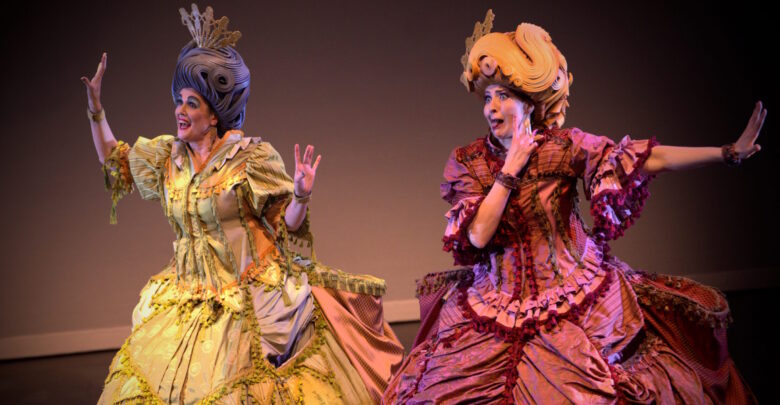Play Review: The Spinsters
Through laughter and tears, 'The Spinsters' reimagines a classic fairy-tale through a uniquely feminist lens.
 Supplied
SuppliedWe’ve all heard the story of the beautiful, kind-hearted girl who won over the heart of a prince thanks to the blessings of her fairy godmother. In most renditions, Cinderella is the embodiment of all things good and virtuous, whereas her stepsisters are immortal symbols of cruelty and spite. However, The Spinsters, directed by Jan Selman, offers a very different perspective.
Written by and starring Christine Lesiak and Tara Travis, cast as Tormentia and Atrocia respectively, the play gives the ugly stepsisters the chance to recount their own version of the story through an interesting balance of social satire, dark comedy, and unusual visual effects.
The play begins with shadow puppetry. Recounting the original tale of Cinderella, Lesiak and Travis immediately command attention with their energetic, animated voices ringing from the background. Light sarcasm and humorous interjections pave the way for a play that focuses heavily on themes of vanity and the expectations traditionally imposed on women. The recommended viewing age of 14-plus may be an understatement. A great number of suggestive jokes clearly gear the play toward a mature audience.
Lesiak and Travis are the only two actors in the play. At times, this made me feel as though I was watching a stand-up comedy routine. Although this contributes to a very distinct atmosphere, I was forever hoping for new faces to arrive. I would have liked to have seen more of the truly impressive quirky costumes and props.
Designers Adam Dickson and Dusty Hagerüd thought out every last detail for the stepsisters’ costumes and wigs. Even the earrings are purposeful. Meanwhile, the mechanical nature of their dresses, created by Ian Walker, allows them to seemingly float across the stage. They take advantage of this numerous times, sometimes dancing around each other or spinning around in fittingly fantastical ways. Compartmentalized to hide entire props and allow for the creation of intricate shadows, the costumes were my favourite part of the play, and perhaps the most memorable. The head costume designer, Dickson, went above and beyond.
Most interestingly, audience members are visitors at the stepsisters’ ball. Some audience members even get to represent specific characters. The result is innovative and hilarious.
The stepsisters show disdain for how they’re traditionally presented. Yet, they are masterfully portrayed as eccentric, vain characters, prone to gossip and desperate to maintain appearances. Their exaggerated personalities support a near constant flow of laughter. Whether they are poking fun at each other or speaking in complete unison, they succeed in ridiculing stereotypical body image standards and fatphobia.
Even in today’s progressive society, many women feel pressured to conform to a certain ideal. The Spinsters highlights this issue by emphasizing the expectations imposed on the stepsisters to stay thin. Largely, so they can get married. I found myself laughing hardest when they gave a commentary on the pros and cons of wearing stilettos.
As for the set, it is minimalistic. Apart from a chandelier, carefully choreographed lights and sounds accompany the actors. The importance of the light becomes most evident at the play’s climax. This is when the storyline takes on a darker turn and the actors use their costumes to create complicated shadows.
The shapes created by the shadows, sometimes stark and violent, convey difficult emotions and painful memories more effectively than words ever could. We learn that the prince was an abusive man who claimed to love multiple Cinderellas, including the stepsisters themselves. Despite the fact that the play is predominantly comedic in nature, it is in the scenes focusing on these revelations that Lesiak and Travis truly get to show off their acting skills and make the audience forget that they are reciting a script. Their anguish is believable and their pain is raw. The serious nature of the violent abuse they survived contrasts the lightheartedness of the play’s beginning. Yet, The Spinsters sticks to its central message: women shouldn’t have to suffer for acceptance and love.
At the end of the day, The Spinsters fits well into the fringe theater genre. The format is highly unique and non-traditional, leaving audiences both entertained and with plenty of thinking prompts.
You can still catch the play in action at the Westbury Theatre until January 27.




